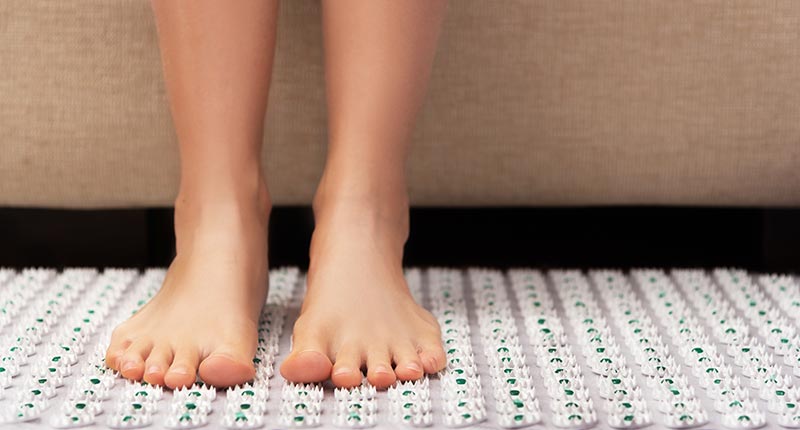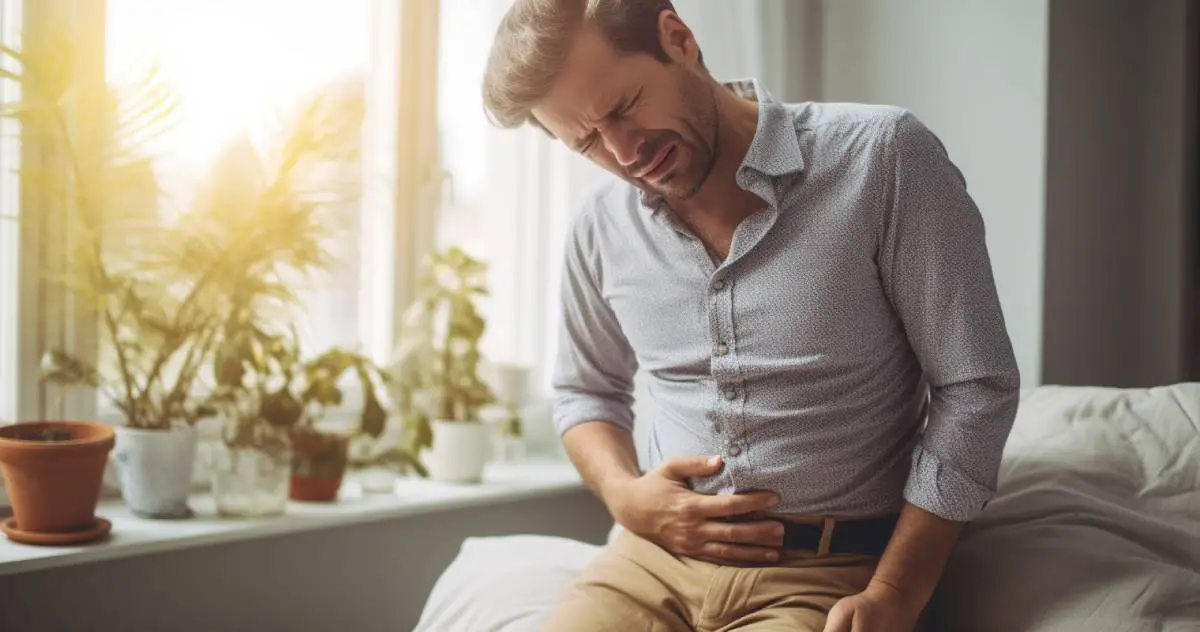Women have to deal with a special set of conditions specific to the female body. Therefore, there are some acupressure points on the lower legs that can be beneficial to them specifically.
Some of these help with PMS, period pain, and menstrual disorder while others help with cold sensitivity.
Where Is The Pressure Point On Your Leg?
The acupressure points on the lower legs that will be discussed are all located below the knee, on the leg, or foot.
For Premenstrual Syndrome (PMS), Period Pain, Menstrual Disorder

To increase the efficacy of acupressure, it is best to start one week before the onset of menstruation. Using these acupressure points on lower legs can provide relief of menstrual pain, irregular menstruation, gynecological troubles, and improvement of poor circulation.
In this study, the authors reviewed the evidence on the effectiveness and safety of acupuncture or acupressure in women with premenstrual syndrome (PMS) or premenstrual dysphoric disorder.
They found five randomized controlled trials including 277 women that examined the effect of acupressure on women with PMS. Results found that acupressure may reduce the number of women having moderate to severe PMS symptoms when compared to sham acupressure. Acupuncture, on the other hand, may reduce the overall mood and physical PMS symptoms when compared to sham.
The study did note that the quality of the evidence was low due to small sample sizes and risk of bias related to blinding, which is when the researchers or participants knew whether they were getting the actual versus sham treatment, but acupuncture does not have any negative impacts and may be worth a try.
Acupoint: KD-6 (Other Names: Kidney-6/Zhao Hai/Shining Sea)
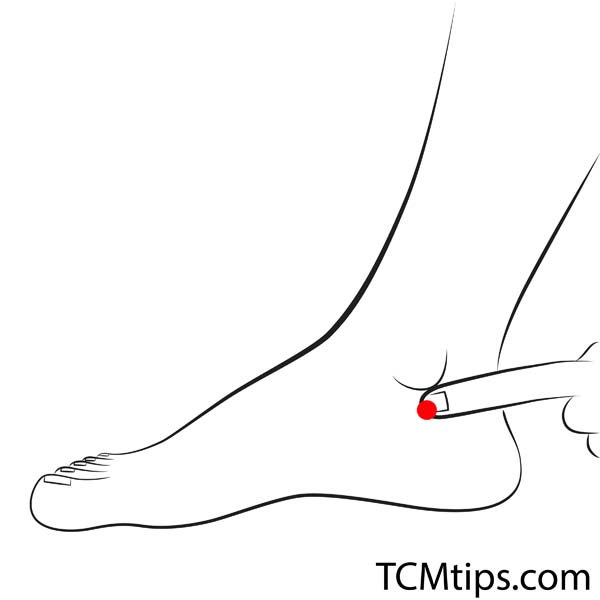
KD-6 is located on the medial aspect of the foot, in the depression below the tip of the medial malleolus.
It is classified as the Master Point of the Yin Qiao Vessel when coupled with LU-7.
In addition to being one of the acupressure points for menstrual cramps, it is indicated for dryness and soreness of the throat, constipation, retention of urine, bloody leukorrhea, prolapse of the uterus, pruritus vulvae, epilepsy, and eye disorders.
It functions by nourishing the kidneys, clearing deficiency-Heat, regulating the Yin Qiao vessel, benefitting the throat and the eyes, and calming the Shen.
Acupoint: SP-6 (Other Names: Spleen-6/San Yin Jiao/Three Yin Intersection)
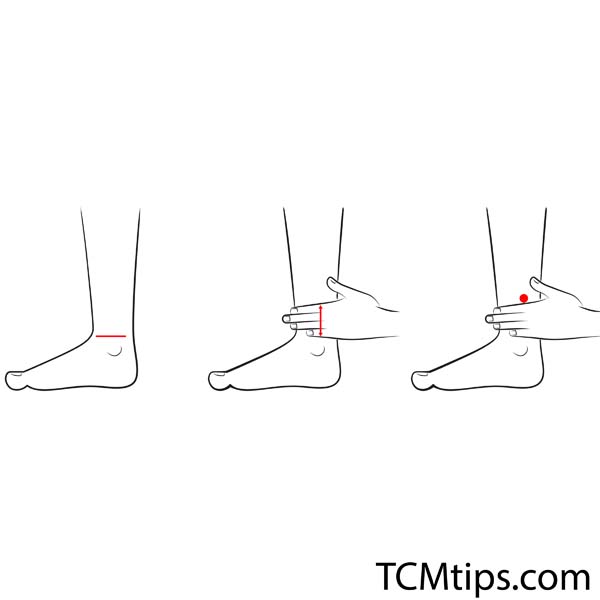
SP-6 is located on the medial aspect of the lower leg, 3 cun above the medial malleolus, on the posterior border of the medial aspect of the tibia.

It is classified as the crossing point of the Spleen, Kidney, and Liver Meridians.
Also, it is indicated for irregular menstruation, dysmenorrhea, menorrhagia, leukorrhea, amenorrhea, and mass and gathering in the abdomen.
It functions by strengthening the Spleen and Stomach, resolving dampness, harmonizing the Liver, strengthening the Kidneys, nourishing Blood and Yin, regulating menstruation, cooling and invigorating the Blood, benefitting urination, calming the Shen.
This is one of the most commonly used and most versatile points. Because the point crosses the Spleen, Kidney, and Liver Meridians, it can treat many conditions associated with all three organs. It’s an important point in the treatment of any digestive, gynecological, and emotional condition.
A study aimed to determine the effect of acupressure at SP-6 on the severity of menstrual symptoms in the two types of primary dysmenorrhea demonstrated the effectiveness of acupressure. In a clustered randomized controlled trial on 72 eligible students, subjects were randomly divided into intervention and control groups. No intervention was administered in the first cycle. During the next two cycles, SP-6 was pressed on the intervention group for 20 minutes at the time of pain. Subjects were allowed to consume ibuprofen as needed and the participants recorded and reported menstrual symptoms severity.
The severity of menstrual symptoms and duration of resting time was significantly reduced in the intervention cycles and groups. Additionally, those in the average number of ibuprofen pills taken by intervention groups was significantly less than the control groups. The study concluded that using this method of acupressure points on lower legs, either alone or with other methods, is recommended to treat dysmenorrhea.
For Cold Sensitivity
A study in the Journal of Acupuncture and Meridian Studies concluded that reflexology has systemic effects and is an alternative method for treating cold intolerance.
Acupoint: KI-3 (Other Names: Kidney-3/Tai Xi/Supreme Stream)
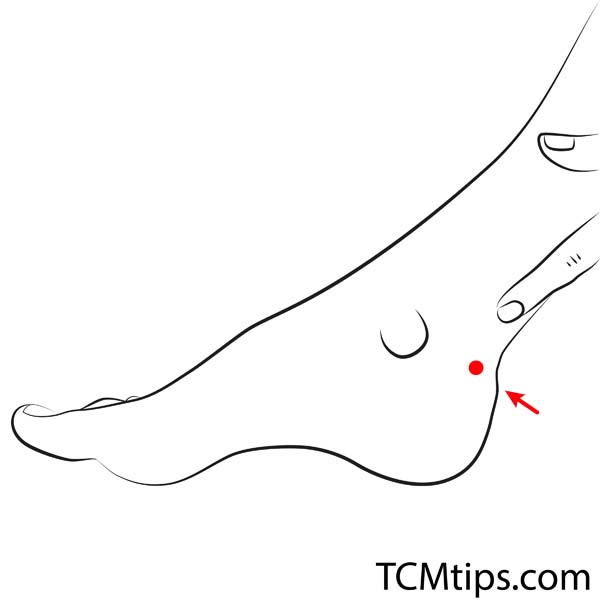
KI-3 is located on the medial aspect of the foot, posterior to the medial malleolus, in the depression between the tip of the medial malleolus and tendo calcaneus.
It is classified as the Yuan-Source point of the Kidney Meridian and the Shu-Stream point of the Kidney Meridian.
In addition to being useful in reflexology for hip pain, it is indicated for frequent need to urinate, deafness, tinnitus, irregular menstruation, lumbar pain, headache, dizziness, blurring of vision, toothache, swelling of pharynx, cough, asthma, diabetes, insomnia.
It functions by tonifying the Kidneys, Yin, and Yang, strengthening the low back, and relieving heel and ankle pain.
KI-3 has the effect of promoting blood circulation. This point is effective in improving poor circulation, especially cold feet. It relieves constipation because the abdomen gets colder and the intestines work better. It is also effective for menstrual pain and can also be expected to be effective in preventing leg cramps and eliminating swelling.
For Gastrointestinal Symptoms
Acupoint: ST-36 (Other Names: Stomach-36/Zu San Li/Leg Three Miles)

ST-36 is one of the pressure points on the lower legs located on the anterior aspect of the lower leg, a couple of fingers below the boney edge of the lower tibia.
It is classified as the He-Sea point of the Stomach Meridian and the Command point of the Abdomen Point of the Sea of Water and Grain.
Along with the BL-40 acupuncture point, it is one of the common acupoints to maintain good health. It is indicated for gastric pain, vomiting, diarrhea, indigestion, constipation, abdominal pain, palpitation, shortness of breath, poor appetite, dizziness, insomnia, pain in the knee joint, and edema.
It functions by tonifying Qi and Blood, harmonizing and strengthening the Spleen and Stomach, strengthening the body and the Wei qi, raising Yang, calming the Shen, activating the meridian, and stopping pain.
 P. Sze
P. Sze 




